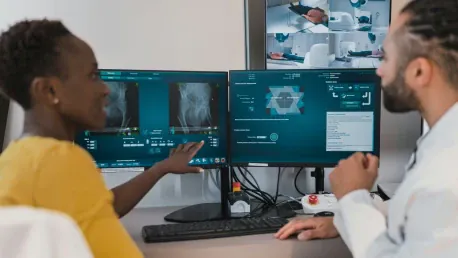Recent studies emphasize the critical need to increase state Medicaid payment rates to enhance access to medical imaging for vulnerable populations. Radiology experts highlight significant disparities in reimbursement rates among different insurance providers, with Medicaid typically paying lower rates compared to Medicare and commercial insurers. Researchers at the Neiman Health Policy Institute conducted a comprehensive study to ascertain the impact of variable Medicaid reimbursements on access to imaging services. Their analysis revealed that states with higher Medicaid reimbursement rates reported higher utilization of medical imaging such as CT scans, MRIs, and ultrasounds.
Disparities in Imaging Access Based on Reimbursement Rates
Impact of Lower Medicaid Reimbursement Rates
The study illuminated a stark disparity in access to imaging services, depending on Medicaid reimbursement rates. States with lower Medicaid reimbursement rates exhibited a significantly reduced likelihood of Medicaid beneficiaries undergoing necessary imaging procedures. Specifically, the probability of these beneficiaries receiving CT or MRI scans was 26% less, ultrasound 21% less, and regular radiography 32% less when compared to states with higher reimbursement rates. These findings suggest that reimbursement rates play a crucial role in determining access to imaging care for Medicaid patients, potentially leading to inadequate diagnosis and treatment for those in underfunded states.
Furthermore, this disparity in access can exacerbate existing inequalities within the healthcare system, as Medicaid serves a disproportionate number of Black and Hispanic low-income individuals. By not addressing the low reimbursement rates, states inadvertently widen the healthcare gap, leaving marginalized communities underserved. The research by the Neiman Health Policy Institute thus underscores the need for policy interventions aimed at increasing Medicaid rates to ensure equitable access to essential diagnostic services, thereby aiming to rectify these systemic disparities.
Medicaid to Medicare Reimbursement Ratios
In order to consider the cost differences across states, researchers calculated Medicaid to Medicare reimbursement ratios. They found that the median Medicaid payment rates for imaging services ranged between 74% and 85% of Medicare rates. States at the lower end of the compensation spectrum reimbursed at 74% or less of Medicare rates for radiography, while the most generous states matched 100% or even surpassed Medicare rates. Such a broad range in reimbursement rates underscores the variability in Medicaid’s ability to provide equitable healthcare access across the nation.
This inconsistency highlights a fundamental issue within the Medicaid system: equal coverage does not equate to equal access to services. Higher reimbursement rates facilitate more extensive imaging utilization, which can lead to better diagnostic accuracy and timelier treatments. Conversely, lower rates in certain states contribute to the reduced use of critical imaging, which can delay diagnosis and adversely impact patient care. Addressing this imbalance by bridging the reimbursement gap could significantly reduce healthcare disparities and improve outcomes for Medicaid beneficiaries.
The Broader Implications of Increasing Medicaid Rates
Reducing Healthcare Disparities Through Policy Reforms
By increasing Medicaid reimbursement rates, the study suggests it is possible to mitigate access disparities and enhance overall healthcare quality for low-income individuals. Higher reimbursement rates correlate with improved access to medical imaging, which is vital for accurate diagnosis and effective treatment of various conditions. By focusing on vulnerable populations, these reforms can help bridge the healthcare gap that disproportionately affects Black and Hispanic communities, ensuring more equitable treatment across the board.
Increasing reimbursement rates is not merely about improving imaging access but also about fostering a more equitable healthcare system. Implementing these changes requires concerted policy efforts, backed by robust data and stakeholder buy-in. By demonstrating the tangible benefits of higher Medicaid rates through compelling research findings, policymakers can be persuaded to make the necessary adjustments. Ultimately, this would mean enhanced access to diagnostic services and better health outcomes for some of the most vulnerable populations in society, fulfilling Medicaid’s role as a healthcare safety net.
The Necessity of Standardization and Evaluation
Recent research highlights the urgent need to increase state Medicaid payment rates to improve access to medical imaging for underprivileged communities. Radiology professionals point out significant disparities in reimbursement among insurance providers, noting Medicaid typically offers lower rates compared to Medicare and private insurers. A comprehensive study by the Neiman Health Policy Institute examined how varying Medicaid reimbursements impact access to imaging services. The findings showed that states with higher Medicaid reimbursement rates experienced increased use of medical imaging services, including CT scans, MRIs, and ultrasounds. According to the study, raising reimbursement rates can play a crucial role in ensuring more equitable access to essential diagnostic tools for vulnerable populations. This not only supports better health outcomes but also helps reduce healthcare disparities. By addressing the financial barriers faced by Medicaid providers, the healthcare system can move toward a more inclusive model that better serves all patients, regardless of their insurance status.









